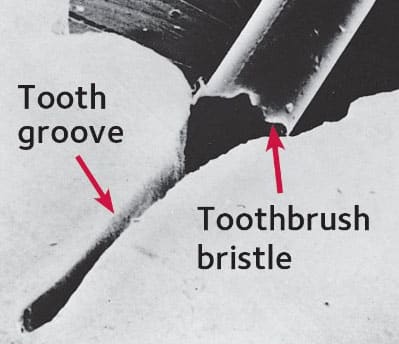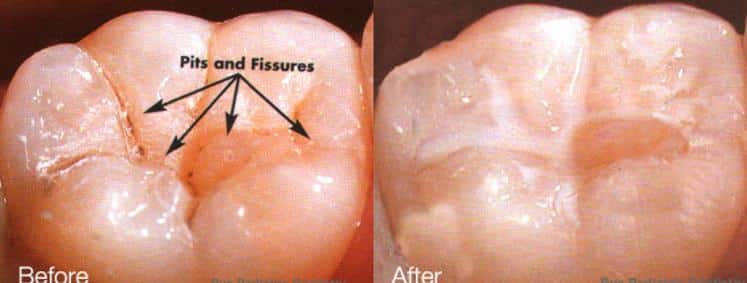Dental Sealants
Sealants on permanent molars reduce the risk of cavities by 80% (CDC)
Sealants are painless preventative fillings placed to prevent teeth from decay and cavities. They are a thin plastic coating placed in the grooves of the chewing surfaces of back molars. The sealant material is flowed in to pits and grooves and seals out bacteria and food that may cause decay.
Teeth are coated with a sticky film of bacteria called plaque.
Plaque is a mixture of bacteria and the food it consumes. Some bacteria produce acid as it consumes sugar. These cariogenic bacteria and their acid byproduct can break down the hard outer layer of teeth called enamel. Overtime the weakened enamel may form tooth decay which is a hole in the tooth.
Tooth decay often begins on the chewing surfaces of the back teeth due to the difficulty of removing plaque from the deep pits and grooves. Some grooves have tortuous anatomy that makes it impossible for the toothbrush bristles to clean them effectively.

Nine out of ten cavities that children get are on their permanent back teeth (CDC). By sealing out the bacteria, sealants prevent decay formation. Sealants are a safe and effective way to prevent decay. According to the Center for Disease Control (CDC), children age 6 to 11 without sealants have almost 3X more cavities than children with cavities.
HOW ARE SEALANTS APPLIED
Sealants are easy and painless to apply. No numbing is necessary.
- Tooth is cleaned .
- Grooves are painted with sealants.
- Special light is used to cure the sealant into a durable, hard coating.
WHAT DO SEALANTS LOOK LIKE

Sealants are white and smooth as seen on the image on the right. They are smooth and can’t be felt.
Sealants usually last several years before they need to be replaced. Overtime, sealants may come off. Chewing on ice and hard foods will cause sealants to break down faster. During regular visits, Dr. Jen in Sunnyvale, CA will check on the sealants and can reapply them if needed.
WHEN ARE SEALANTS APPLIED
Sealants are recommended for children and teenagers as tooth decay can start as soon as the teeth come in. Ideally the sealants are placed as soon as the molar teeth erupt into the mouth. That being said, you never outgrow the chance of developing decay and cavities, so adults can benefit from sealants, too.
A sealant can be placed on any tooth that does not have a cavity in its pit and fissures. If your tooth is stained or has deep grooves, a sealant would likely be beneficial. If your tooth has decay or a cavity, then a filling is needed and a sealant is not appropriate. To get an evaluation to see if your teeth would benefit from sealants, please schedule now.
